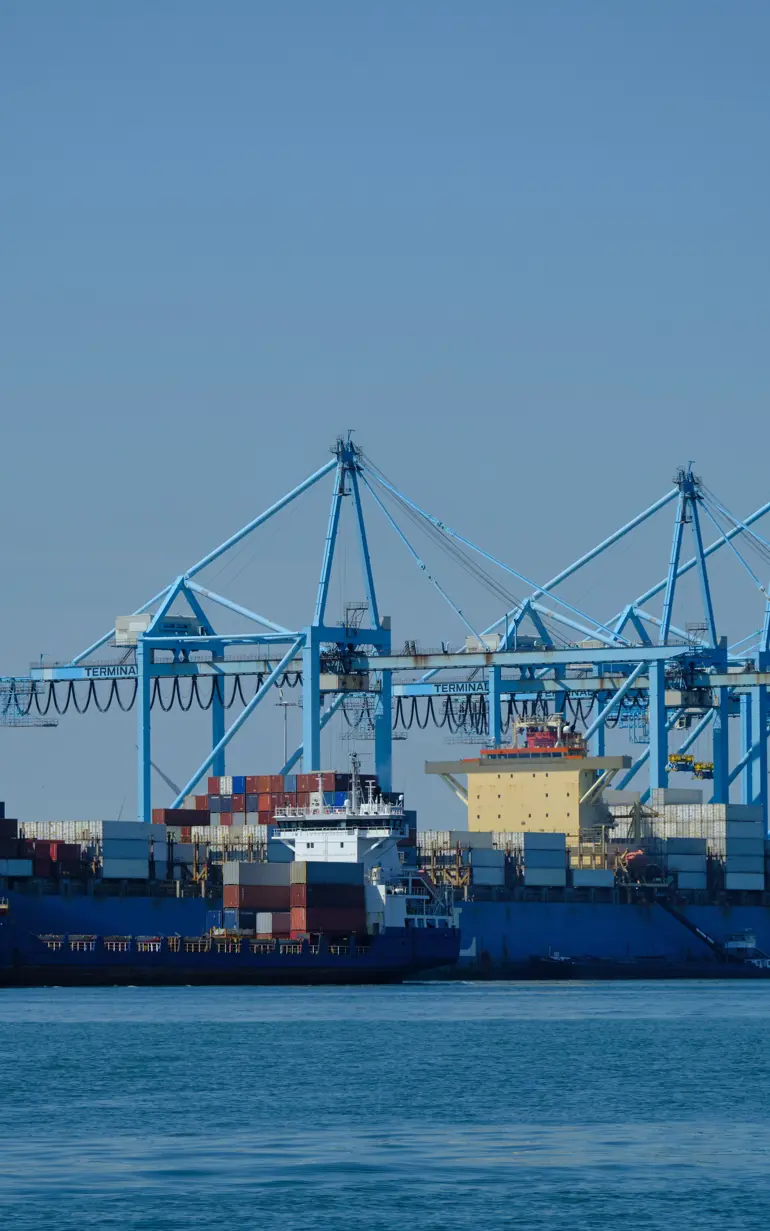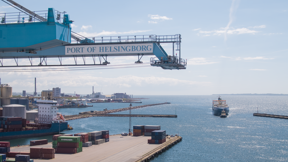
Reduction of wind gust damage means safety at APM Terminals
Port traffic management system helps APM Terminals accurately predict weather events and prepare for safe operations as efficiently as possible
As climate changes, the frequency and severity of wind gusts hitting APM Terminals facilities around the world has increased significantly. With the potential to topple container stacks, wind gusts can cause serious damage to terminal equipment, containers and their contents. In 2021, a port traffic management software reduced container toppling incidents at its terminal in Tangier to zero.
Challenge
Falling containers are clearly a massive risk to safety and result in huge costs for both the terminal and its customers. Clear-ups are costly, complex and dangerous and can cause significant supply chain delays.
It was far from the first time that APM Terminals MedPort Tangier had seen damage from heavy winds. But the severity of an event in 2020 convinced the terminal leadership team that more had to be done to protect both people and operations. Not just in Tangier, but across APM Terminals, where containers were being blown over with increasing frequency.
‘As this is a global problem with both safety and customer impact, we clearly needed to find a better solution’, says Ahmed El Amrani, HSSE Manager at APM Terminals MedPort Tangier. ‘Until then, we had been moving up to 800 containers every time the forecast said to expect gales. A huge and costly effort with limited effect. The weather forecast was too unreliable, so we kept scrambling at the wrong times or taken by surprise. We needed better data to make the right moves at the right time.’
Solution
APM Terminals collaborated with DHI on configuring a module in their physics-based port traffic management system, NCOS ONLINE, to leverage its weather forecast capabilities for creating a decision support solution for the container yard. For six months, DHI experts on meteorology, aerodynamics and integrated IT solutions worked alongside experienced terminal operators. Together, they produced a solution, which offers the container yard personnel in MedPort Tangier highly detailed wind forecasts and predicts exactly which containers are at risk at any given time.
Artificial intelligence
The NCOS ONLINE YardSafe Module is powered by an AI engine, which provides much more accurate predictions of wind speed and direction at the terminal and automatically alerts users when pre-set wind speed criteria are forecast to be exceeded.
‘The tool pulls the weight, size and position of each container from the terminal operating system and builds a live 3D model of the yard, updated in real-time with each container movement’, explains Ahmed. ’Machine learning, or “artificial intelligence” capabilities, also identifies each time the actual weather does not match the forecast, and the system learns from the deviation and improves the forecasting.’
Global Safety Awards
The Wind Resilience Tool was selected from hundreds of entries as a finalist in APM Terminal’s annual Global Safety Awards. The theme of the Awards is ‘We Learn and Adapt’. Ideas that focus on APM Terminals constantly work to identify the safety risks in operations and proactively put in place safeguards to ensure that even when things go wrong, they don’t lead to severe or fatal injuries.
The awards identify projects that effectively reduce risk, involve the frontline and demonstrate leadership commitment. Winning ideas also contribute to efficiency and reliability and can be implemented across APM Terminals locations around the world.
Results
The system went live at the MedPort Tangier terminal in July 2021 and has already proven its worth: Not a single container has been toppled since, even though wind speeds have exceeded 25 m/s on several occasions. And the terminal now only needs to move about 20 containers for each wind warning, down from 800.
- Zero toppled containers since implementation of system
- Terminal now only needs to move 20 containers for each wind warning, down from 800
- Safety for both people and operations
This story first appeared on APM Terminals’ Youtube channel: Advanced software reduces wind gust damage to zero at APM Terminals MedPort Tangier – YouTube.
Client:
Location:
Morocco
Related SDG(s):
SDG 8: Promote sustained, inclusive and sustainable economic growth, full and productive employment and decent work for all
SDG 13: Take urgent action to combat climate change and its impacts
Technology:
‘This is a fantastic example of how we are using data and technology to adapt to new challenges and manage serious risks. We know that climate change is increasing the frequency of severe weather events, making these falling containers an even bigger risk to our people and operations. This innovative tool will enable us to manage and mitigate that risk much more effectively as we share it across all our landside container operations. It has the potential both to save lives and to boost our service reliability for customers. It doesn’t get much better than that.’
Tanuj Luthra, Head of Global Safety and Resilience
APM Terminals
About our client
With 74 operations, APM Terminals operates one of the world’s most comprehensive port networks. The company’s goal is to become the world’s preferred port solutions integrator. Its team of 21,000 industry professionals is focused on delivering the operational excellence and solutions businesses require to reach their potential. APM Terminals is part of the shipping company Maersk.
You may also like
How can we help?
With our global network of offices, we make sure you get the right answers to your local needs. Tell us about your water challenges and we will get back to you.



